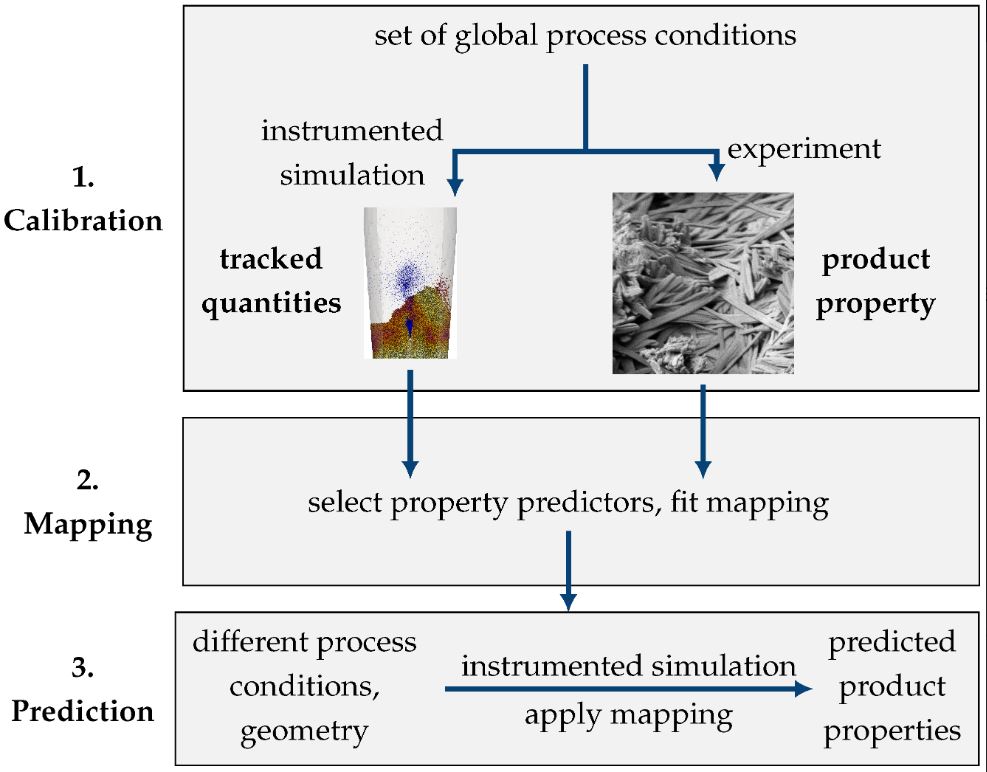Product-Property Guided Scale-Up of a Fluidized Bed Spray Granulation Process Using the CFD-DEM Method

In this work, a method to predict the surface structures of particles produced by fluidized bed spray layering granulation using the CFD-DEM method was developed. A simple state-variable/event tracking approach was implemented to capture indirect quantifiers of the progression of structure-forming microprocesses. The state of the droplet at the time of impact on the particle surface, as well as the time required for drying, is correlated to product properties that quantify surface structure morphology such as roughness. A workflow for scale-up of fluidized bed granulation guided by product-property predictors is presented. The approach was tested on a demonstration case from the literature, where a particle core is coated with sodium benzoate solution. The experiment was scaled-up by a factor of eight to pilot-scale using the developed method. Varying the number of nozzles in use in the pilot-scale granulation affected the particle surface roughness due to the differing drying conditions encountered. On this basis, the ability of the tracked-quantity approach to capture the relationship between product properties and geometric feature or process conditions is demonstrated.
Introduction
-
Layering granulation, where particles quickly dry and the injected liquid leaves a solid residue that forms a shell or coating, and
-
agglomeration, where the cohesive forces of the liquid cause the particles to remain in contact, resulting in the formation of larger granules after solidification of the liquid or sintering.
-
the product moisture content,
-
the area surface roughness as analyzed by confocal microscopy,
-
the modulus of elasticity using compression testing,
-
the granule porosity using X-ray micro-computer tomography,
-
the wetting behavior using the contact angle as given by the sessile drop experiment.

